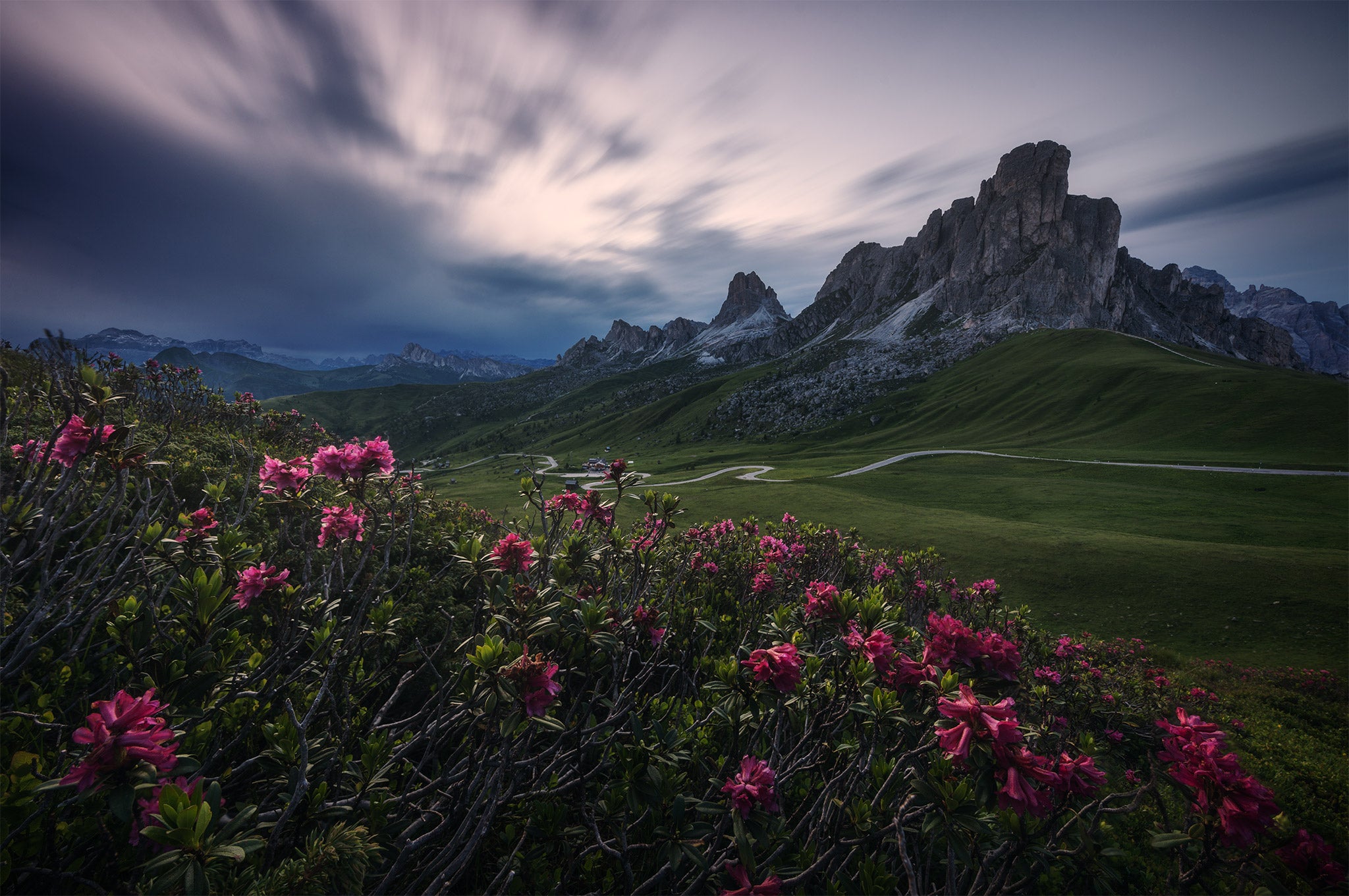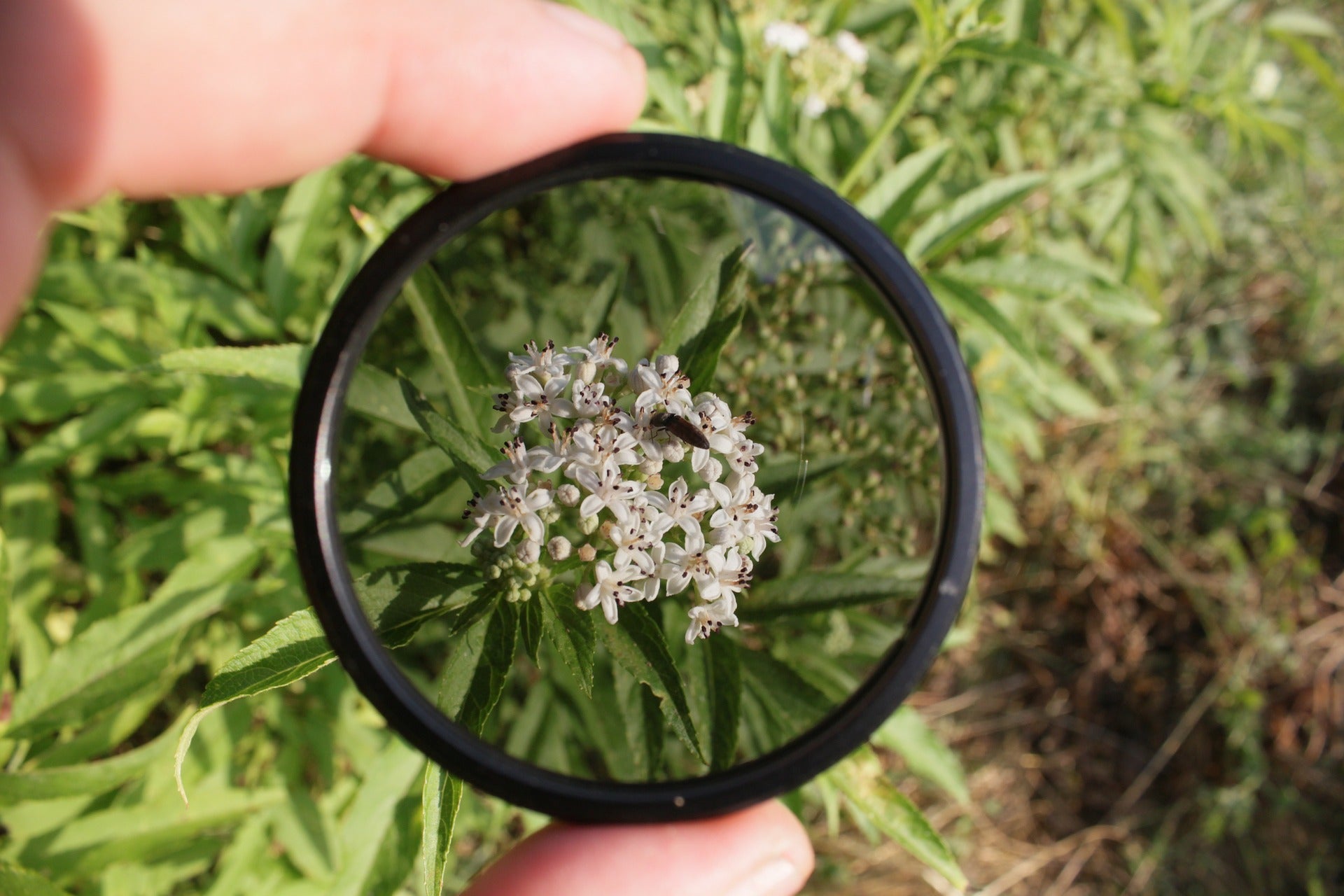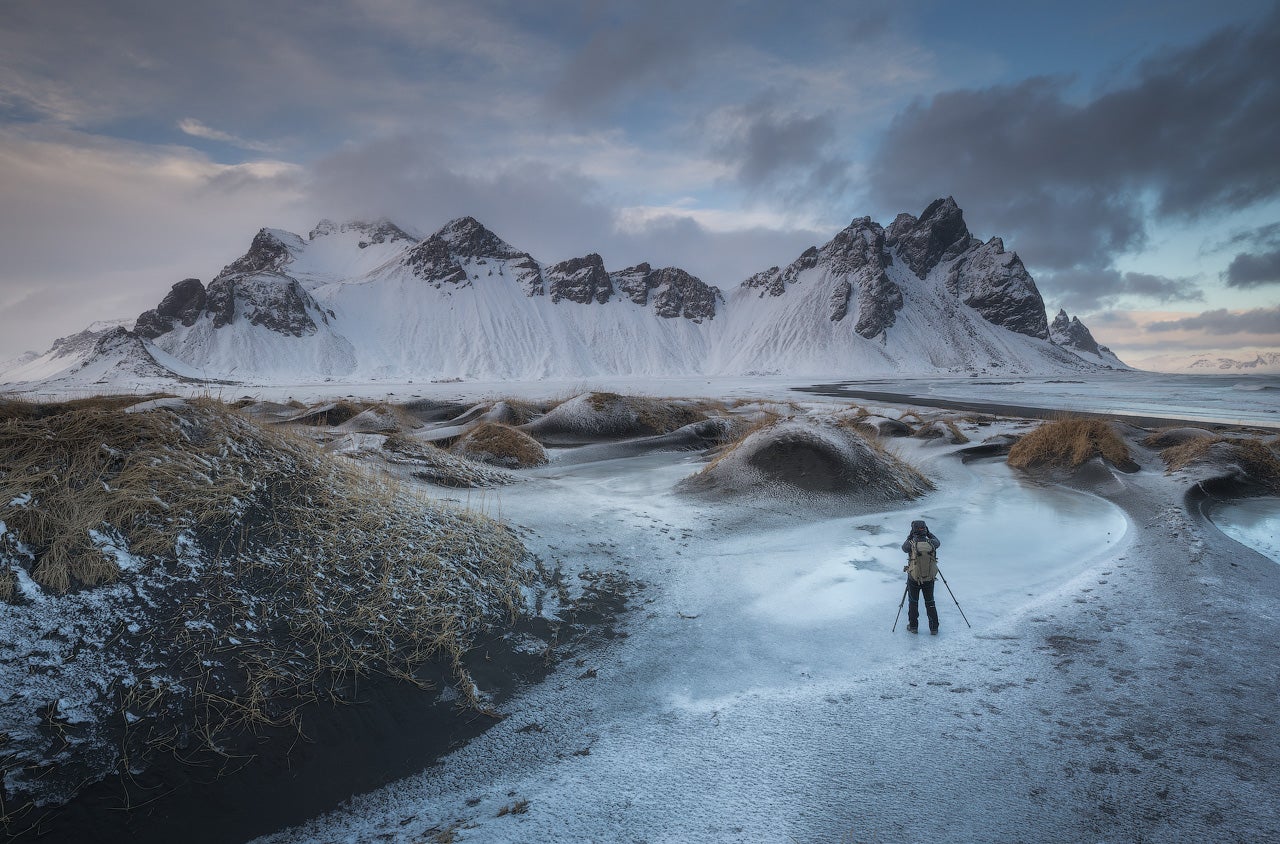
Wide angle lenses are a must-have for landscape photography in Iceland, as they give you the ability to include the foreground, middle ground, background and sky simultaneously in your photos – which is exactly what most people want to remember when they look back on their time travelling through this otherworldly landscape.
- Check out these Camera and Gear Reviews
- See The Best Camera Gear Recommendations for Photography in Iceland
While wide angle lenses won’t work in all scenes and circumstances, they are perfect for landscape photography in Iceland, creating considerable depth in the scene and expanding your options for different compositions. In this article, we’ll explain what a wide angle lens actually is and discuss the 5 key reasons why you should use one when photographing the landscape in Iceland.
What is a Wide Angle Lens?
A wide angle lens is a lens with a short focal length and a wide field of view. Typically, it is wider than 35mm on a full-frame camera. Such a lens allows you to capture much more of the scene than a normal lens can, making it possible to include more foreground as well as background information in your image.
All wide angle lenses come in fixed (prime) and variable (zoom) focal length varieties. What you choose to use will be up to you and your personal preferences. Fisheye lenses are also included as wide angle lenses, though they create a lot more visual distortion and as a result, can appear to have a circular effect – hence the term ‘fisheye’.
 Canon EF 16-35mm f/2.8L wide angle lens. Photo by: 'FuFu Wolf'.
Canon EF 16-35mm f/2.8L wide angle lens. Photo by: 'FuFu Wolf'.
Some typical examples of wide angle lenses are the Canon EF 16-35mm f/2.8L III USM, Nikon AF-S NIKKOR 24mm f/1.4G ED Lens, Sony E 10-18mm f/4 OSS Lens, and Pentax HD Pentax-D FA 24-70mm f/2.8ED SDM WR Lens. If you are using a crop-frame camera, then of course, these lengths will differ.
- See also: Camera and Gear Reviews
5 Reasons to Use a Wide Angle Lens
Now that you’ve got the low-down on what a wide angle lens actually is, let’s talk about all the reasons why you should use one to let your landscape photography reach its full potential in Iceland.
1. Getting Creative
There are a million and one ways to photograph the landscape in Iceland. With volcanoes, massive glaciers, hot springs, vast lava fields, stunning coastlines and black sand beaches at your feet, you’ll have more than enough to shoot for days on end. Keep in mind though that there are a billion photos of Iceland floating around out there, so to capture a truly great photo of the landscape in Iceland, it is important that you find interesting compositions and look for creative ways to frame your shots.
How does a wide angle lens help? Well, the landscape in Iceland is full of tiny details. From mossy rocks to cracks in the earth, these details are what makes the landscape so unique. As such, they make the perfect subject when considering what to fill your frame with.
 Getting up close and personal with the geothermal features of the Highlands. Photo by: 'Iceland Photo Tours'.
Getting up close and personal with the geothermal features of the Highlands. Photo by: 'Iceland Photo Tours'.
Wide angle lenses allow you to get as close to the details as possible without excluding important elements in the background, which in turn gives the viewer the feeling of being present within the actual scene itself. By emphasising your subjects in the foreground, you can draw the viewer into the landscape, making them feel like they’re in a whole new world and giving them an entirely different perspective to the grandiosity of nature in Iceland.
2. Photographing the Northern Lights
When the Northern Lights take hold, you’ll notice that they stretch all over the sky and it will be impossible to shoot them with a telephoto zoom. On the other hand, a wide angle lens will allow you to capture vast amounts of the landscape… or, in the case of the Northern Lights, much more of the sky.
 Wide angle lenses are perfect for photographing the Northern Lights. Photo by: 'Iceland Photo Tours'.
Wide angle lenses are perfect for photographing the Northern Lights. Photo by: 'Iceland Photo Tours'.
As mentioned before, using a wide angle will also allow you to capture interesting elements of both the landscape and the sky all within the one shot, which is crucial for creating interesting photos of the Northern Lights. It’s important that you don’t forget to include something interesting in the foreground, as Northern Lights photography is not just about capturing the colours in the sky themselves.
With all great photos, there are elements that will draw the viewer into the shot, towards the subject itself. To really make your Iceland story come alive, you’ll want to make sure that the viewer is aware that you haven’t just photographed the Northern Lights anywhere in the world, but that you have shot them in Iceland. This means using your wide angle lens to its advantage to include the surrounding environment. For example, if you are shooting the Northern Lights at the Jökulsárlón glacier lagoon, then make sure to have some of it in your foreground!
 Give the Northern Lights some context by including the foreground. Photo by: 'Iurie Belegurschi'.
Give the Northern Lights some context by including the foreground. Photo by: 'Iurie Belegurschi'.
3. Creating Drama
The thing with using a wide angle lens is that it can create quite a bit of perspective distortion in your shot. Vertical or receding parallel lines will appear to converge, some objects may seem stretched or enlarged, and the landscape may appear more irregular. Although this may sound strange to begin with, this type of perspective distortion can actually enhance your compositions of the landscape in Iceland.
A wide angle lens has the ability to take in much more of what’s in the scene in front of you. It makes it possible to create drama by using elements within the scene itself. You will be able to get up close to leading lines, harnessing the perspective distortion to use the lines to extend into your subject, creating a compelling pattern that draws the viewer into your composition. In doing so, you’ll be able to define the space that is being captured and to add another level of depth and interest to your image.
 Wide angle lens distortion creates drama, as with the lenticular cloud here at Jokulsarlon. Photo by: 'Iurie Belegurschi'.
Wide angle lens distortion creates drama, as with the lenticular cloud here at Jokulsarlon. Photo by: 'Iurie Belegurschi'.
What you’ll end up creating is drama. A lot of it. You can make your subject appear larger or even exaggerate more of the details in the foreground, making them stand out from the rest of the environment. Using a wide angle lens also lets you capture the scale of nature in Iceland – enhancing the feeling of drama that your viewer feels when they look at your photo, as though you are recreating how you felt when you stood in Iceland and took the shot yourself.
4. Getting Everything in Focus
Sharp photos stand out and the trick to stunning landscape photography is to make everything as sharp as possible. If you want everything in your photos of Iceland to be sharp and in-focus, then you simply can’t go past a wide-angle lens.
 The large depth of a field of a wide angle lens can help get everything in focus. Photo by: 'Albert Dros'.
The large depth of a field of a wide angle lens can help get everything in focus. Photo by: 'Albert Dros'.
How does a wide angle lens help? The focal length of your lens has a huge effect on its depth of field. Telephoto lenses have a smaller depth of field, while wide angle lenses have an incredible depth of field. What this means is that you’ll be able to use your wide angle lens to get everything from just a few metres away to infinity in focus. The result is an image with maximum sharpness.
5. Photographing the Midnight Sun
Ah, Iceland… the land of the Midnight Sun. This special phenomenon, whereby the sun doesn’t really dip below the horizon, is visible only during summer from late May until July. Some nights, the sun can be visible for almost 24 hours in Reykjavík, with blazing sunsets melting almost seamlessly into the gorgeous sunrise. The Midnight Sun is one of the best times for landscape photography in Iceland! But how exactly do you capture the Midnight Sun in all of its golden glory? By using a wide angle lens, of course!
 The Midnight Sun lights up Seljalandsfoss with a sunstar. Photo by: 'Kaspars Dzenis'.
The Midnight Sun lights up Seljalandsfoss with a sunstar. Photo by: 'Kaspars Dzenis'.
Shooting into the sun can be difficult but it means that you’ll be able to create an amazing sunstar (or starburst) effect. The wider your lens, the more pronounced the effect will be. Why is this important? Well, wide-angle shots can tell more of a story, helping your viewer to have a sense of place. This is perfect when capturing the Midnight Sun, as it really gives you the creative ability to make it clear that you didn’t just shoot any sunset in Iceland, but that you shot the Midnight Sun phenomenon itself.
Creating sunstars is also a fun and simple way to add a little flair to your Midnight Sun photos of Iceland. To make your own sunstar, you’ll definitely want to be using a wide angle lens with a small aperture – that is, a larger f number. Anything from f/16 to f/22 is perfect. A wide angle lens combined with a small aperture when you are shooting into the Midnight Sun will create a crisp sunstar that is super sharp and defined.
To really make the Midnight Sun apparent in your shots though, play with the direction of your sunstar. You can try hiding part of it behind the Reynisdrangar sea stacks or even have the sun nudging part of a manmade structure, such as the Black Church of Búðir, within your frame. When the sun is slightly obstructed like this, a sunstar will form or you can have an incredible burst of brightness that makes your shot stand out against the rest of the photos you’ve seen of Iceland.
About the author: Serena Dzenis is a landscape photographer based in Iceland. You can find more of her work on her website or by following her on Facebook and Instagram.
Are you ready for the adventure of a lifetime? Join us on a 10 Day Photography Workshop Around Iceland in summer.












